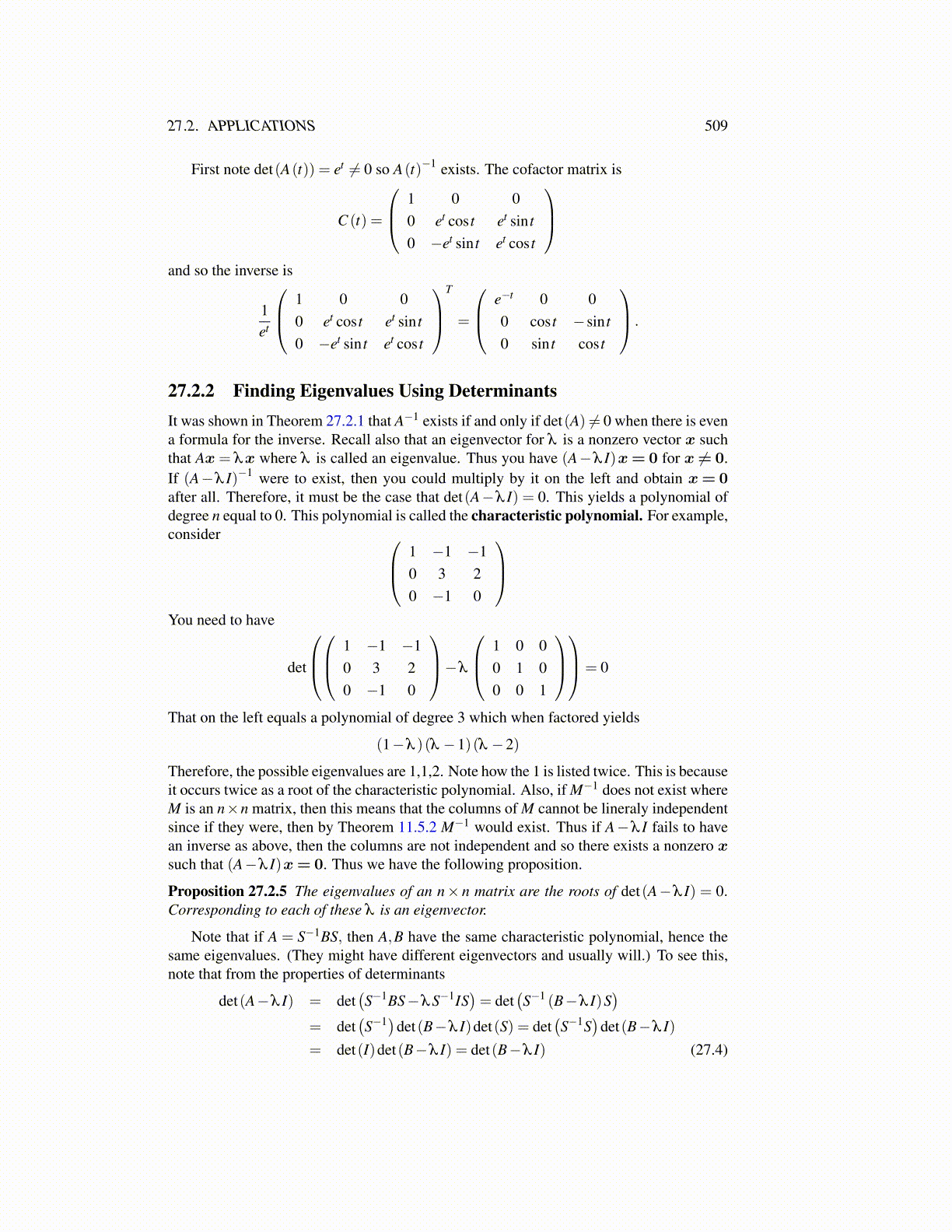
27.2. APPLICATIONS 509
First note det(A(t)) = et ̸= 0 so A(t)−1 exists. The cofactor matrix is
C (t) =
1 0 00 et cos t et sin t0 −et sin t et cos t
and so the inverse is
1et
1 0 00 et cos t et sin t0 −et sin t et cos t
T
=
e−t 0 00 cos t −sin t0 sin t cos t
.
27.2.2 Finding Eigenvalues Using DeterminantsIt was shown in Theorem 27.2.1 that A−1 exists if and only if det(A) ̸= 0 when there is evena formula for the inverse. Recall also that an eigenvector for λ is a nonzero vector x suchthat Ax = λx where λ is called an eigenvalue. Thus you have (A−λ I)x= 0 for x ̸= 0.If (A−λ I)−1 were to exist, then you could multiply by it on the left and obtain x= 0after all. Therefore, it must be the case that det(A−λ I) = 0. This yields a polynomial ofdegree n equal to 0. This polynomial is called the characteristic polynomial. For example,consider 1 −1 −1
0 3 20 −1 0
You need to have
det
1 −1 −1
0 3 20 −1 0
−λ
1 0 00 1 00 0 1
= 0
That on the left equals a polynomial of degree 3 which when factored yields
(1−λ )(λ −1)(λ −2)
Therefore, the possible eigenvalues are 1,1,2. Note how the 1 is listed twice. This is becauseit occurs twice as a root of the characteristic polynomial. Also, if M−1 does not exist whereM is an n×n matrix, then this means that the columns of M cannot be lineraly independentsince if they were, then by Theorem 11.5.2 M−1 would exist. Thus if A−λ I fails to havean inverse as above, then the columns are not independent and so there exists a nonzero xsuch that (A−λ I)x= 0. Thus we have the following proposition.
Proposition 27.2.5 The eigenvalues of an n× n matrix are the roots of det(A−λ I) = 0.Corresponding to each of these λ is an eigenvector.
Note that if A = S−1BS, then A,B have the same characteristic polynomial, hence thesame eigenvalues. (They might have different eigenvectors and usually will.) To see this,note that from the properties of determinants
det(A−λ I) = det(S−1BS−λS−1IS
)= det
(S−1 (B−λ I)S
)= det
(S−1)det(B−λ I)det(S) = det
(S−1S
)det(B−λ I)
= det(I)det(B−λ I) = det(B−λ I) (27.4)